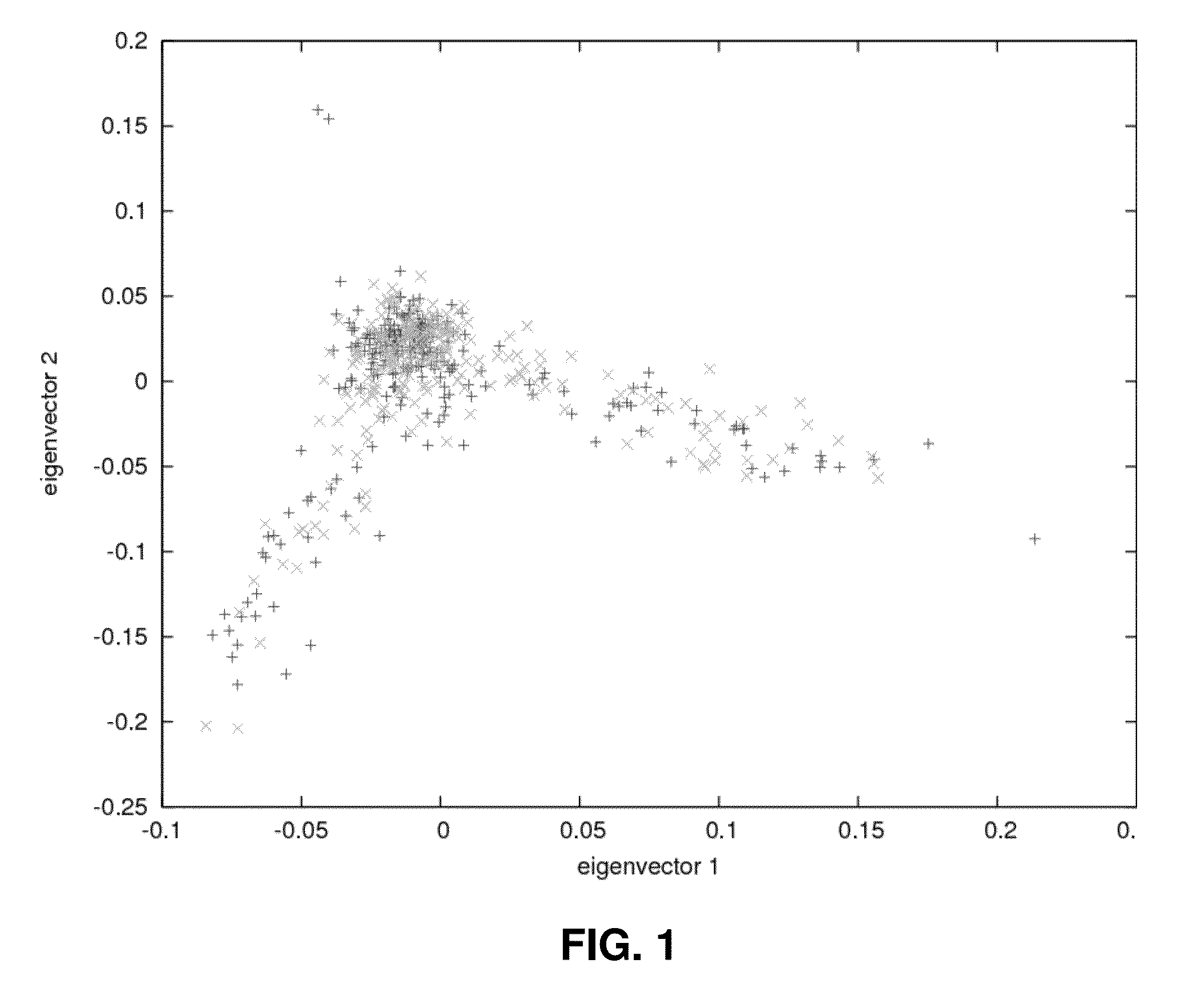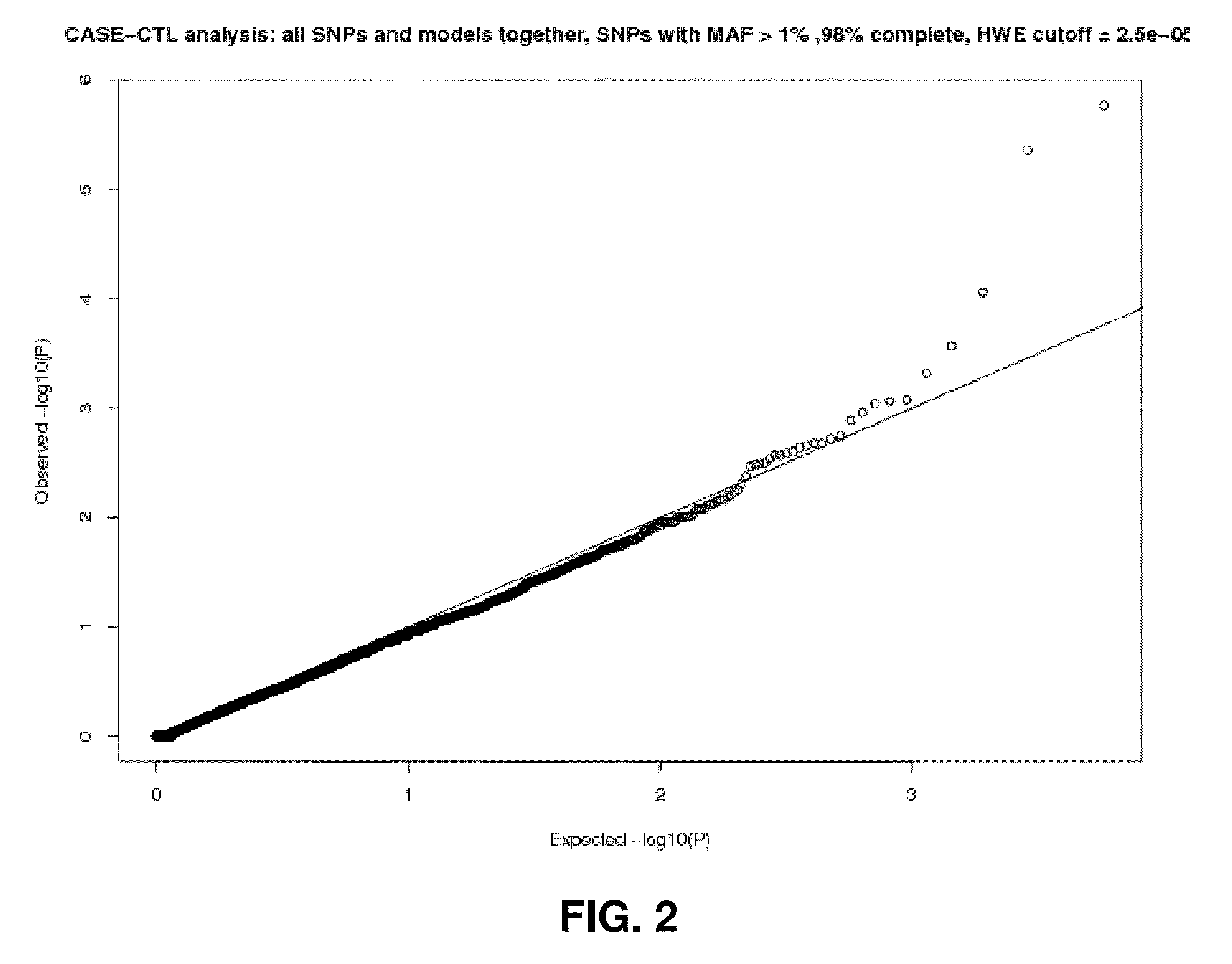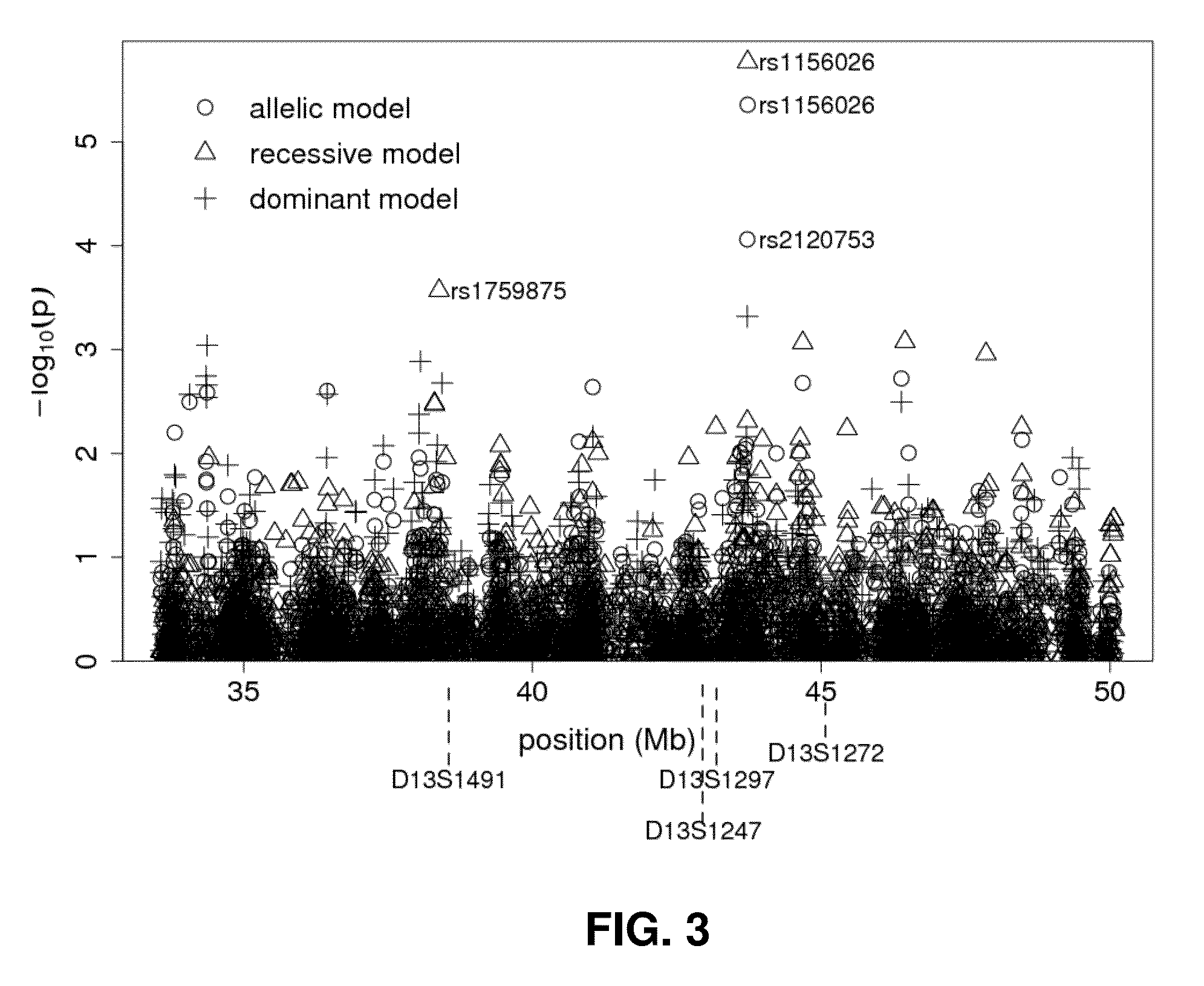Novel markers for mental disorders
a technology for mental disorders and markers, applied in the field of mental disorders, can solve problems such as hallucinations, delusions, bizarre and inappropriate behavior,
- Summary
- Abstract
- Description
- Claims
- Application Information
AI Technical Summary
Benefits of technology
Problems solved by technology
Method used
Image
Examples
example 1
Methods
[0122]Study Subjects and Phenotype Definition.
[0123]The case-control sample consisted of 247 unrelated SZ cases and 250 unrelated normal controls without any psychiatric diagnosis from the Eastern Quebec population. All subjects were Caucasian of French-Canadian ancestry. The proportion of males was 79 percent among the cases and 78 percent among the controls. Controls were adults, with a median age of 45 at the time of psychiatric evaluation. Among cases, the median age of onset of SZ was 24 and the interquartile range 20-29.5. A lifetime best-estimate DSM-IV diagnosis was made for the unrelated SZ cases and the kindred members using personal interview, information from relatives and extensive medical records. A stringent diagnosis procedure outlined in previous reports (Maziade, M., et al., Am J Psychiatry, 1992. 149(12): p. 1674-86; Roy, M. A., et al., Am J Psychiatry, 1997. 154(12): p. 1726-33) was applied. In brief, all available information across lifetime from differen...
example 2
Matching of Cases to Controls on Ancestry
[0145]Comparison of the case and control groups along the first ten PCs revealed no important difference (p-values between 0.033 and 0.72). FIG. 1 shows the near perfect overlap between the two groups on the first two PCs. The inflation factor estimated by the genomic control method applied to the genotype data was only 1.006. The good fit of the observed distribution of p-values to the expected one in the candidate region can be seen on a quantile-quantile plot (FIG. 2). In consideration of this absence of evidence of population substructure differences between cases and controls, it was decided to not apply any correction.
example 3
Association with Genotyped SNPs in the Case-Control Sample
[0146]The SNP rs1156026 was the only SNP associated to SZ with a FDR<0.05 in the primary analysis of the SNPs individually using Fisher's exact test, with an OR of 1.81 for the T allele (FIGS. 3 and 4) and 2.63 (95% confidence interval (CI) [1.74, 4.00]) for the TT genotype against the others. Results with the Cochran-Armitage trend test were nearly identical to the Fisher exact allelic test. When the subset of 60 cases with positive family history of SZ, psychosis or paranoia in first, second or third degree relatives was compared to the control group, rs1156026 remained the SNP with the lowest p-value in the region. The SNP effect size was larger in this familial subset (T allele OR=2.28, TT genotype OR=3.10, 95% CI [1.64, 5.86]) but the greatly reduced number of cases resulted in a less significant association (Table 2, FIG. 4). When the case sample was restricted to the 133 cases with onset of SZ before age 26 rs1156026 w...
PUM
| Property | Measurement | Unit |
|---|---|---|
| Disorder | aaaaa | aaaaa |
Abstract
Description
Claims
Application Information
 Login to View More
Login to View More - R&D
- Intellectual Property
- Life Sciences
- Materials
- Tech Scout
- Unparalleled Data Quality
- Higher Quality Content
- 60% Fewer Hallucinations
Browse by: Latest US Patents, China's latest patents, Technical Efficacy Thesaurus, Application Domain, Technology Topic, Popular Technical Reports.
© 2025 PatSnap. All rights reserved.Legal|Privacy policy|Modern Slavery Act Transparency Statement|Sitemap|About US| Contact US: help@patsnap.com



